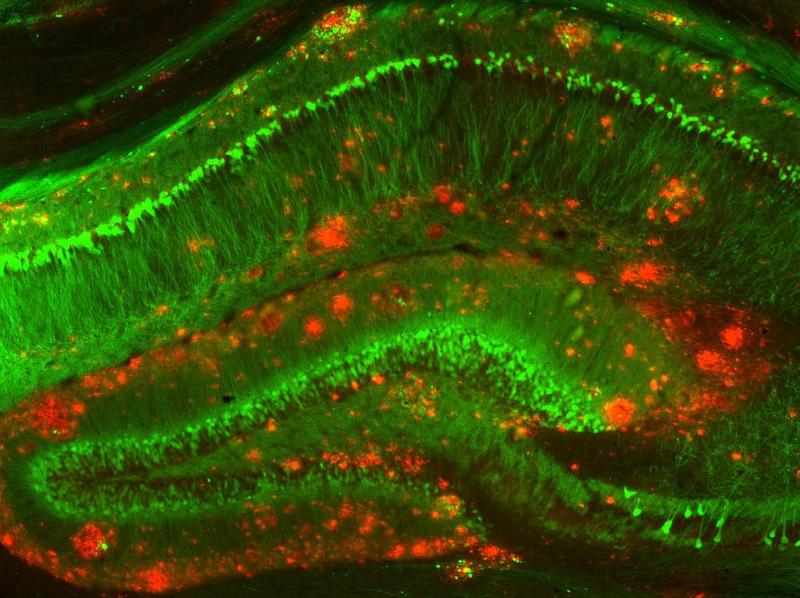
New publications written by members of the Duke Neurology Department published this June advanced our understanding of the origins of Alzheimer’s disease, stroke, and spinal injuries, as well as offering new insights on how to better diagnose and treat these and other conditions. Our faculty contributed to recent articles in Lancet Neurology, Stroke, and other high-impact journals. Read more about each of these stories, and find links to the original articles themselves, in the paragraphs below.
Neuromuscular Disease
- Ultrasound appears to be an effective, efficient method to assess tongue weakness and atrophy, according to a new study in Molecular Genetics and Metabolism. This technique could be a useful tool in distinguishing late-onset Pompe disease from other forms of acquired/hereditary myopathy. Lisa Hobson-Webb, MD, contributed to the study, which is available here.
- Rick Bedlack, MD, PhD, was the first author of the 62nd entry in the ALSUntangled series that evaluates potential alternative therapies for ALS. Their analysis of vitamin C suggests that this vitamin is unlikely to hold potential as an effective therapy. Read their full article in Amyotrophic Lateral Sclerosis and Frontotemporal Degeneration.
- The interactions between COVID-19 and various neurological conditions remain an important but still underexplored area in neurology. In a letter to Muscle and Nerve, Xiaoyan Li, MD, and Rick Bedlack, MD, PhD, described the accelerated COVID-19 progression in two patients with ALS. Read about those cases here.
Stroke
- A new meta-analysis demonstrates that low-frequency repetitive transcranial magnetic stimulation provides significant improvements on language recovery for stroke survivors living with aphasia. Wuwei “Wayne” Feng, MD, MS, contributed to this study, which appears in Neurorehabilitation and Neural Repair. Read that article here.
- Michael “Luke” James, MD, contributed to a study that evaluates clinical outcomes of four factor prothrombin complex concentrate (4F-PCC) and exanet alfa for reversal of ICH associated with oral factor Xa inhibitors. Read what they found in the Journal of Thrombosis and Thrombolysis.
- A new study in Clinical Neurology and Neurosurgery examines short- and long-term opioid use in survivors in subarachnoid hemorrhage. Brian Mac Grory, MB BCh, MRCP, contributed to this analysis, which found that most subarachnoid hemorrhage patients receive opioids inpatient and at discharge, with opioid use declining in survivors over time. Read that article here.
- Atrial fibrillation appears to be more common after central retinal artery occlusion (CRAO), according to a new article in Stroke. First author Brian Mac Grory, MB BCh, MRCP, Ying Xian, MD, PhD, Wuwei “Wayne” Feng, MD, MS, and colleagues reviewed 100 patients reviewed patients with CRAO, ischemic stroke, and matched controls, finding that patients with CRAO had a higher rate of AF than controls and a comparable rate to patients with stroke. Read the full article here.
Translational Brain Sciences
- Metabolic adaptations in the brain are critical to the establishment and maintenance of normal cellular functions and to the pathological responses to disease processes. Senior authors Carol Colton, PhD, and Audra York, as well as Michael Vitek, PhD, and William "Kirby" Gottschalk, PhD, examined specific metabolic pathways involved in immune-mediated neuronal processes in brain using isolated neurons derived from human autopsy brain sections of normal individuals and individuals diagnosed as Alzheimer’s disease. The cell- specific data they gathered provides clues to the re-direction of metabolism that occurs in neurons affected by Alzheimer’s disease. Read the full story in ASN Neuro.
- Michael Lutz, PhD, and James Burke, MD, PhD,were part of a team that tested and qualified a biomarker risk assignment algorithm to identified individuals at risk of Alzheimer’s-related MCI and evaluated the safety and efficacy of pioglitazone in that group. Read the full article in Lancet Neurology.
- A new review article in Frontiers in Neuroscience summarizes current evidence for pioglitazone as a potential treatment for Alzheimer’s disease, including the genetic and biological origins of the disease, the existing animal and preclinical evidence for its effects, and directions for future research. William “Kirby” Gottschalk, PhD, was the senior author of the study, which is available here.
- Senior author William "Kirby" Gottschalk, PhD Carol Colton, PhD, Joan Wilson, and colleagues developed and described a novel dosing and analysis method for isotope tracing of metabolic products of arginine. This technique will permit arginine pathway activity differentiation between mouse genotypes, ages, sexes, or drug treatments to elucidate the contribution of this pathway to Alzheimer's disease. Read that article in the Journal of the American Society for Mass Spectrometry.
- For almost all journals the most widely used statistical framework for establishing the presence or absence of a treatment effect has been frequentist analysis, typically using P values. Michael Lutz, PhD, co-authored a new editorial in Alzheimer’s and Dementia calls for a re-evaluation of this approach in a way that may enrich standard statistical analyses for studies on Alzheimer’s disease. Read their discussion of the topic here.
Hospital Neurology
- Stacey Bennett, MSN, A/ACNP-BC, co-authored a new case report of a 76-year-old man who presented with an atypical ischaemic stroke localised to his haemiballism. Bennett and colleagues discuss the workup and when to intervene for this rare condition in the latest issue of BMJ Case Reports. Read that article here.
Neurocritical Care
- Stem-cell therapies remain an unfulfilled promise for treatment of acute spinal cord injuries and other conditions. Daniel Laswkotiz, MD, MHS, and Brian Mace were part of a study that facilitated stem cell-induced neurogenesis and angiogenesis in a rat model of spinal cord injury. Their work provides an important proof of concept for future multimodal therapies for these kinds of devastating injuries. Read the full study in Critical Care Explorations.
Other Topics
- A new article in the Journal of Neural Engineering discusses the development, validation, and dissemination of flexible, high-resolution, thin-film electrodes for recording neural activity in animals and humans. These electrodes offer the potential to advance neuroscience research and clinical care on a variety of levels. Senior author Johnathan Viventi, MD, PhD, Gregory Cogan, MD, PhD, and Derek Southwell, MD, PhD, contributed to the article, which is available here.